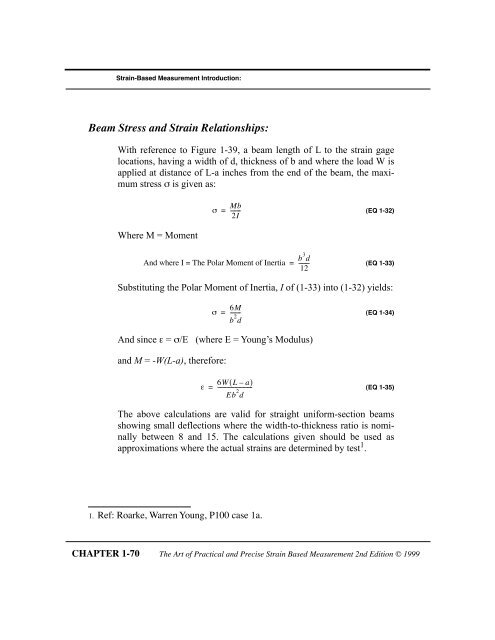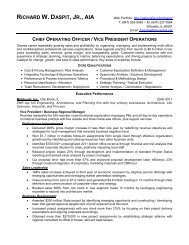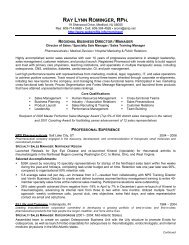The Art of Practical and Precise Strain Based ... - Webprofile.info
The Art of Practical and Precise Strain Based ... - Webprofile.info
The Art of Practical and Precise Strain Based ... - Webprofile.info
- No tags were found...
Create successful ePaper yourself
Turn your PDF publications into a flip-book with our unique Google optimized e-Paper software.
<strong>Strain</strong>-<strong>Based</strong> Measurement Introduction:Beam Stress <strong>and</strong> <strong>Strain</strong> Relationships:With reference to Figure 1-39, a beam length <strong>of</strong> L to the strain gagelocations, having a width <strong>of</strong> d, thickness <strong>of</strong> b <strong>and</strong> where the load W isapplied at distance <strong>of</strong> L-a inches from the end <strong>of</strong> the beam, the maximumstress s is given as:s=Mb-------2I(EQ 1-32)Where M = MomentAnd where I = <strong>The</strong> Polar Moment <strong>of</strong> Inertia=b 3 d--------12(EQ 1-33)Substituting the Polar Moment <strong>of</strong> Inertia, I <strong>of</strong> (1-33) into (1-32) yields:s=6M--------b 2 d(EQ 1-34)And since e = s/E (where E = YoungÕs Modulus)<strong>and</strong> M = -W(L-a), therefore:6W( L Ð a)e = -------------------------Eb 2 d(EQ 1-35)<strong>The</strong> above calculations are valid for straight uniform-section beamsshowing small deflections where the width-to-thickness ratio is nominallybetween 8 <strong>and</strong> 15. <strong>The</strong> calculations given should be used asapproximations where the actual strains are determined by test 1 .1. Ref: Roarke, Warren Young, P100 case 1a.CHAPTER 1-70 <strong>The</strong> <strong>Art</strong> <strong>of</strong> <strong>Practical</strong> <strong>and</strong> <strong>Precise</strong> <strong>Strain</strong> <strong>Based</strong> Measurement 2nd Edition © 1999
















